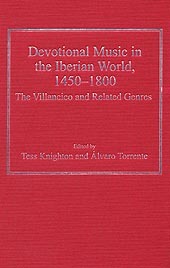Devotional Music in the Iberian World, 1450–1800 The Villancico and Related Genres
Auteur : Torrente Álvaro
Coordonnateur : Knighton Tess

Date de parution : 09-2007
15.6x23.4 cm
Date de parution : 11-2016
15.6x23.4 cm
Thème de Devotional Music in the Iberian World, 1450–1800 :
Mots-clés :
Juan Del Encina; royal; Christ Child; chapel; Christmas Matins; juan; Royal Chapels; del; Immaculate Conception; encina; Devotional Music; capilla; Valencia Cathedral; christmas; Diego Sánchez De Badajoz; matins; Corpus Christi Procession; biblioteca; Santa Ana De; nacional; Spanish Cathedrals; varo Torrente; Polyphonic Songs; Pepe Rey; Adoration Of The Christ Child; Alberto del Río; Vice Versa; Andrea Bombi; Spanish Villancicos; Pablo-L; Rodríguez; Salamanca Cathedral; Rui Cabral Lopes; Auto De La; Hathaway Janet; Public Religious Celebrations; Alain Bégue; Nun Musicians; Pilar Ramos Lpez; Tantum Ergo; Benoît Michel; Philippine Islands; María Gembero Ustàrroz; Blessed Sacrament; David Irving; Villancicos De; Geoffrey Baker; Grand Motet; Bernardo Illari; MC



